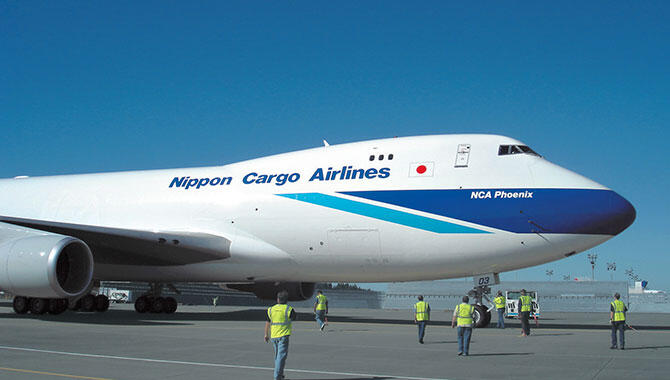Challenges
- Build a detailed income and expenditure management system and realize a high profit structure
- Realize a comprehensive accounting system that complies with overseas accounting requirements and tax systems.
- Automatically link with the three major operational systems of operation, maintenance, and cargo, and aim to integrate the entire company's systems.
Implemented Products/Solutions
SAP ERP 6.0, SAP BI 7.0, ESS (Employee Self-reimbursement), FSCM (Loan Management), EP (Portal), PI (XI at Implementation)
Project Background
Nippon Cargo Airlines Co., Ltd. (NCA) was established in 1978 as an international cargo airline with investment from NYK Line, domestic shipping companies, and domestic airlines. Aiming for "IT independence'' from using airline systems, the company decided to build its own system.
Starting with the establishment of the computer center, the entire project took two years, including the construction of the core business systems (flight operation, maintenance, and cargo systems), the review of domestic and overseas communication networks, and the introduction of unified groupware for both domestic and overseas use. The last remaining task was the renewal of the accounting system.
NCA had set "drastic reform of the income and expenditure structure and strengthening of global business" as a major management issue. However, with the accounting system at that time, cost accounting was performed after closing the financial accounts every month, and when preparing high-level management data such as route income and expenditures, a great deal of labor was required, mostly by hand using spreadsheet software and the like. Moreover, the granularity of the data content was coarse. As a result, the accuracy and immediacy of the data were inadequate for managing the actual results of each investment and project, as well as for understanding the income and expenses of each business segment. In addition, the company had reached the limit of its ability to make modifications and improvements to cope with changes in the taxation system at its worldwide locations.
Therefore, in December 2007, NCA decided to build a new global standard accounting system based on SAP ERP and aim for overall integration by linking data with the upstream core system.
Project Outline
System Goals
The integrated accounting system was named "i-Account,'' and the following goals were set out:
- 1. Strengthening the support base for business strategy analysis
-
- Automatic processing and accuracy improvement of trade profitability *, route profitability, etc. on a weekly basis
- Improving the accuracy of budget management operations (investment budget/expense budget and performance management)
*Transportation profitability by destination such as North America, Europe, and Asia
- 2. Strengthening the support base for global management
-
- Building a new accounting system in line with global management
- Centralized management of corporate activity data (global management information)
- 3. Integration of company-wide systems
-
- Automatic linkage with core systems such as i-Sky (operation management system), i-Cargo (air cargo transportation management system), and i-Macs (aircraft maintenance management system), realizing company-wide system integration.
- 4.Improve accounting efficiency and strengthen internal controls
-
- Improving efficiency and speed of document processing using workflow functions
- Response to internal control (J-SOX)
- 5. Reduce TCO
-
- Deploying systems that match the actual conditions around the world and reducing associated costs
- Reduction of renovation costs related to future legal and tax reforms
The construction project for this system, named "i-Account", began in December 2007, and in July 2009, it went into simultaneous operation worldwide at each base (branch office) in Japan, Europe, Asia, and North America.
System Overview
The basic expenses required for one aircraft to fly for one hour are called ACMI costs, and are made up of aircraft costs, crew costs, maintenance costs, and insurance premiums. In actual flights, there are additional costs such as cargo transportation costs and fuel costs, but even when flying between the same locations, these numbers vary depending on the flight situation. There are regular flights, as well as special flights and charter flights.
i-Account" is closely and automatically linked with three major mission-critical systems already in operation: the Flight Operation Management System (i-Sky), the Air Cargo Transportation Management System (i-Cargo), and the Airframe Maintenance Management System (i-Macs). This enables the online provision of business-related profitability reports with multidimensional analysis of route profitability, warehouse profitability, trade profitability, etc., as well as accounting-related PL reports with analysis of revenue and expenditure by business and division, activity-based cost details, and foreign exchange impact analysis, etc.
■Overview of i-Account
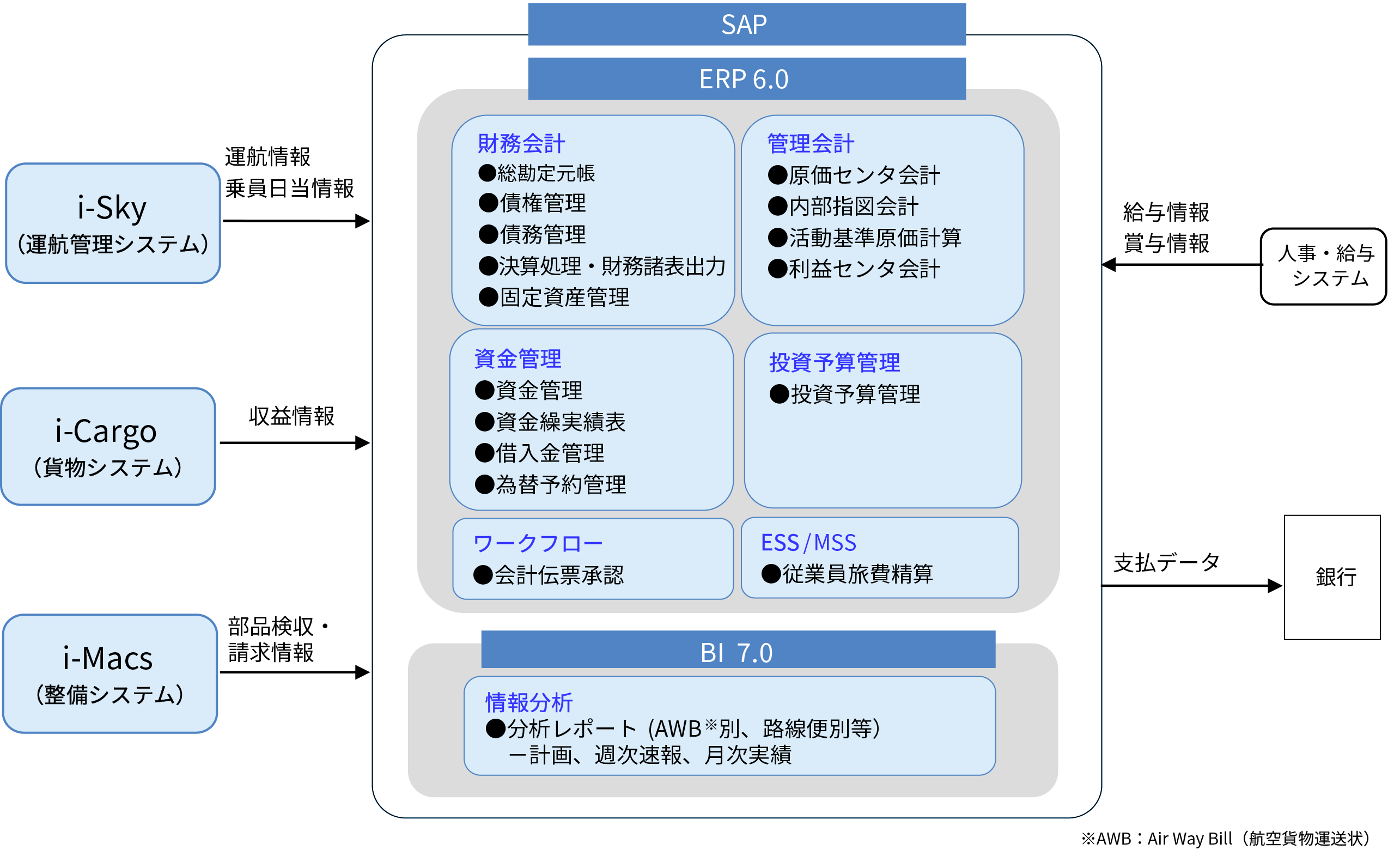
Income and expenditure information is provided on a weekly cycle, broadly based on trade units, flight units, and smaller in terms of AWB (air waybill), delivery airport, and high-priority transport product names, and provides standard costs that are close to actual estimates. This allows us to provide management information in a more timely manner. There is almost no discrepancy in fixed profit based on monthly actual expenses, and financial alignment has been achieved.
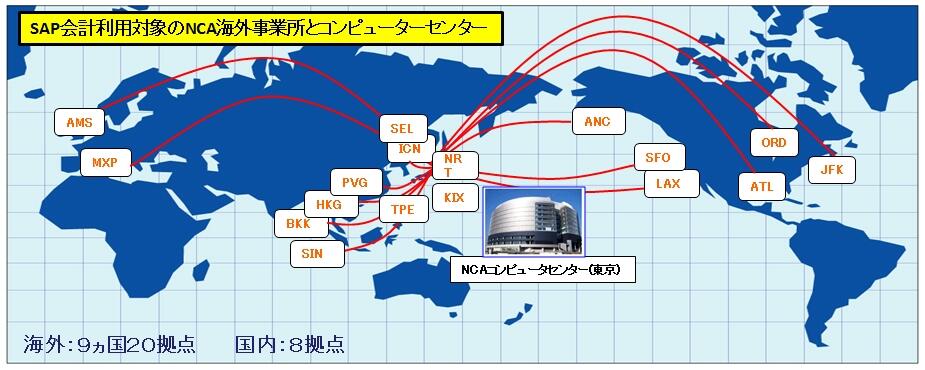 NCA overseas offices and computer centers using SAP accounting system
NCA overseas offices and computer centers using SAP accounting system
On the other hand, regarding employee expense settlements (travel expenses, transportation expenses, etc.), by incorporating the circumstances and regulations of each country, all employees in Japan and overseas become i-Account users, making real-time online processing possible.
As a characteristic of an international airline, Japanese and English language support, as well as support for each country's currency and accounting regulations, were also realized through the introduction of SAP ERP. In addition, the centralized processing in Tokyo requires non-stop, stable operation of the system 24 hours a day, 365 days a year. At the NCA computer center in Tokyo, availability is ensured through the introduction of redundant equipment and networks as well as virtualization technology.
B-EN-G as an Implementation Partner
B-EN-G was selected from multiple system integrators as the partner for this system construction.
Masaaki Kariya, Executive Officer (in charge of IT Strategy, Administrative Headquarters, then General Manager of IT Strategy), who was involved in selecting a partner, said "B-EN-G was chosen because of its experience in implementing SAP ERP overseas, as well as its knowledge of logistics and systemization. Not only does the company have a wealth of experience, but it is highly praised for its ability to ensure proper project control by creating an integrated project structure by employees that seamlessly covers the systemization proposal stage and requirements definition through to development and implementation. I have always thought that it is important to be able to see the faces of everyone from the president to the project members, and B-EN-G fulfilled that goal.''

Masaaki Kariya Executive Officer
In addition, in the process of actually promoting the project, Masaaki said, "The most important thing is that the users were satisfied with the high level of knowledge of institutional accounting of the participating members and the high level of knowledge acquisition ability regarding NCA operations. On the IT side, we appreciated that an extremely reliable WBS was presented for work planning, including data migration and interfaces with other systems. Naturally, we managed the progress of the project in accordance with this WBS. However, the project management to keep time was accurate, such as prioritizing each task, managing precedent relationships, and managing remaining tasks."
"B-EN-G members were sincere. When moving forward with a project, I try to first draw an overall diagram and then incorporate it into a concrete design, and I feel like I was able to share that information smoothly with the members of B-EN-G. ”
Implementation Results
With the operation of i-Account, the previous week's income and expenditure analysis information is calculated the following week and reported at that week's sales meetings and board meetings. NCA summarizes the improvements in income and expenditure analysis achieved by the new system and the granularity of the data in the figure below.
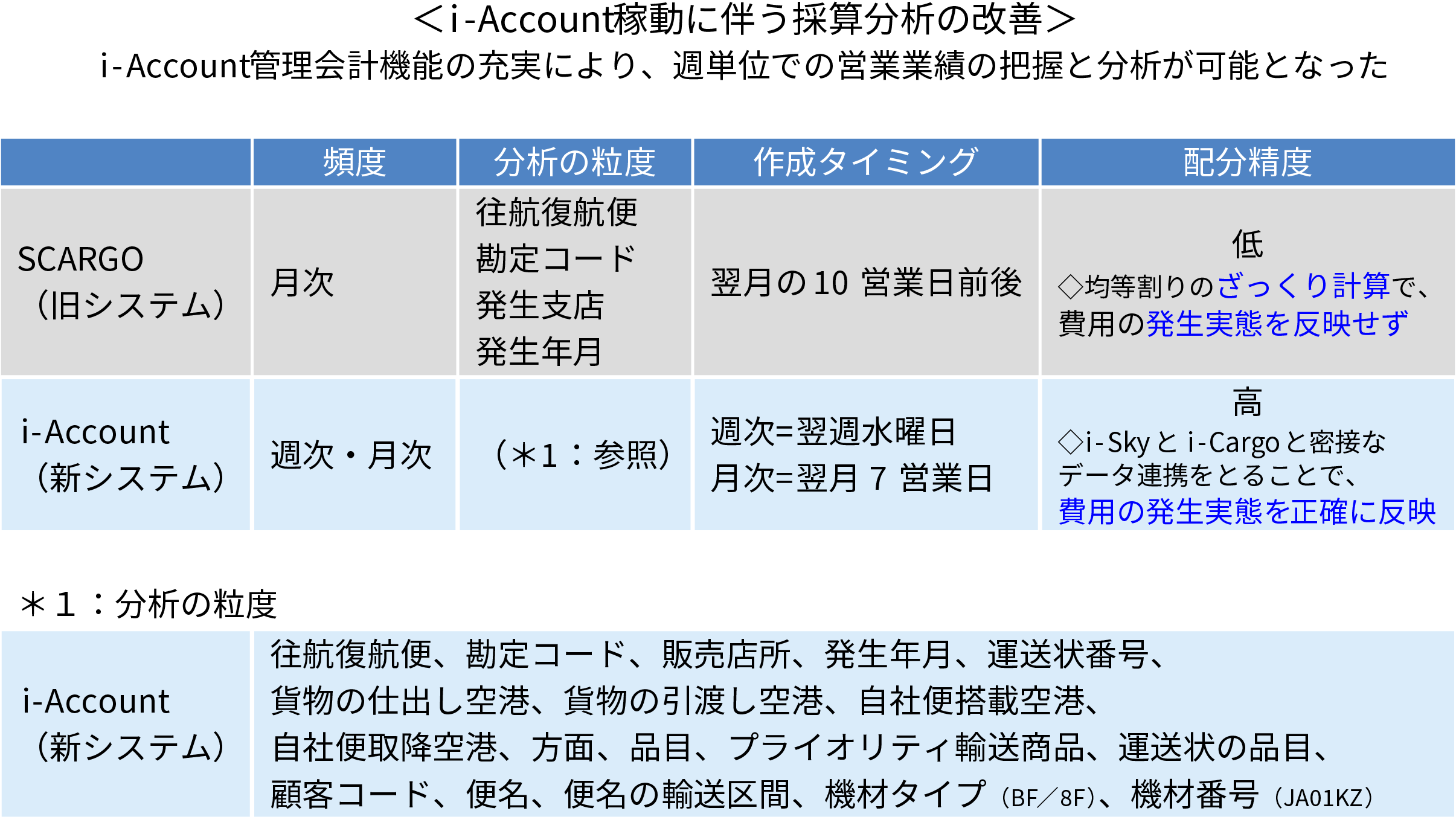
Excerpt from NCA prepared materials
This detailed understanding of income and expenditures is certainly utilized in sales strategies, such as determining increases or decreases in routes, reviewing flight plans, and implementing cost-cutting measures.

Masamitsu Kurita Deputy Director of IT Strategy Department
"It is no exaggeration to say that thanks to this management accounting, we have been able to see our income and expenditures and have been able to take steps to improve profits,'' says Masamitsu Kurita, Deputy Director of the IT Strategy Department. "Generally, if you want to achieve detailed management accounting, you tend to shy away from the field because it requires detailed input, but in that respect, our company's management department and the field are located adjacent to each other. Since the management department also has a sense of the field, they are highly motivated to make improvements. On the other hand, the field staff understands the purpose of data input, so both parties can work together without any problems and input fresh and clean data into the system." This comment shows that the effectiveness of a system is greatly influenced not only by the system itself, but also by how the system is used.
In addition, in terms of operational efficiency, "The operational efficiency of creating accounting materials has improved. Previously, it used to take three or four people many days to prepare income and expenditure reports, but now one person is in charge. It only takes one or two days of work."
In the future, NCA will continue to work on even more advanced utilization, such as compliant with IFRS and responding quickly to changes in the business environment in the airline industry, while keeping an eye on the system image of the entire company.
Case study company introduction
| Company Name | Nippon Cargo Airlines Co., Ltd. Nippon Cargo Airlines Co.,Ltd. |
| Establishment | September 27, 1978 |
| Head office location | Narita City, Chiba Prefecture |
| Business Activities | Scheduled air transport business, non-scheduled air transport business, aerial use business, and other related businesses |
| Company website | https://www.nca.aero/main.html |
*Please note that organization names, positions, numerical data, etc. in the article are based on the time of the interview and may have changed by current viewing.
Related Solutions
Relevant information and case studies based on solutions presented above.
Related Case Studies
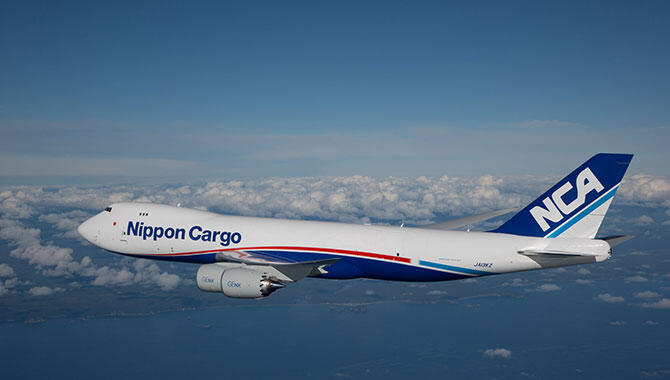
Nippon Cargo Airlines Co., Ltd.
Aiming to Shift to High-Value-Added Businesses: A Case Study of Accounting System Restructuring with RISE with SAP
Logistics
ERP
SAP

Nxera Pharma Japan Co., Ltd. (Formerly Idorsia Pharmaceuticals Japan Ltd.)
Compatible with Global Requirements: Case Study of a Project to Build a Sales Management System Compatible with JD-NET
Medicine
ERP
Pharmaceutical & Medical Device Industries
SAP

GE Healthecare Pharma Limited
Promoting Understanding among Global IT Teams: JD-NET-compliant Enterprise Resource Planning System Implementation Project Case Study
Medicine
ERP
Pharmaceutical & Medical Device Industries
SAP

